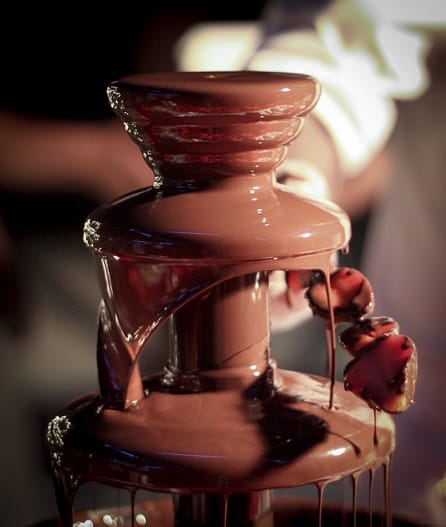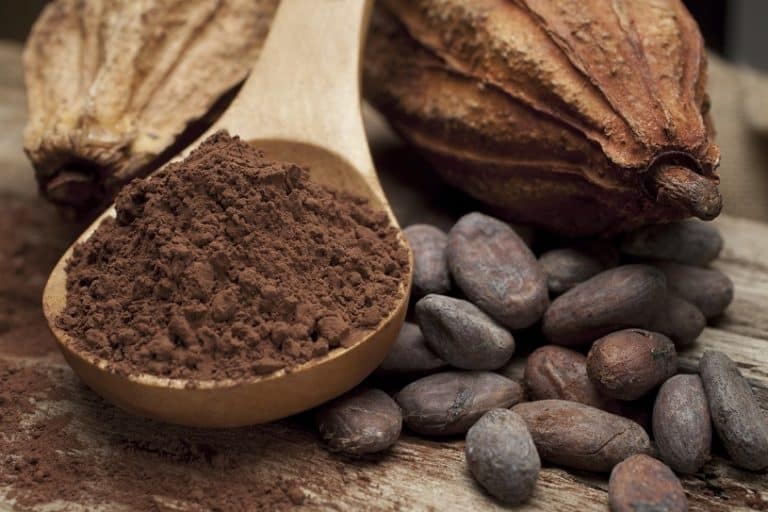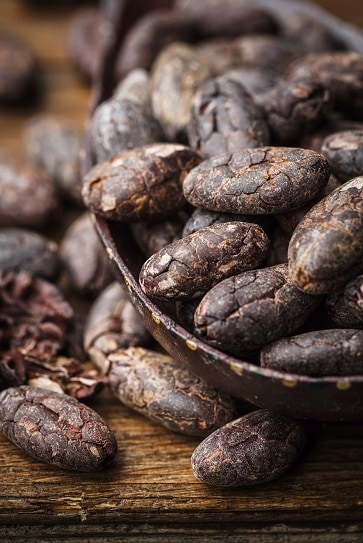 The subject of chocolate and acne is one of the most controversial in all of health.
The subject of chocolate and acne is one of the most controversial in all of health.
For many decades it was common knowledge that eating chocolate would cause an explosion of spots, and mothers all over the world advised their children not to do it.
Then in 1969 a study was published claiming that there was no link, and everyone was delighted and recommenced eating it. But now there are new studies coming out which suggest that chocolate does cause acne after all.
At the same time many people insist that the old view is correct and there’s also a deluge of information in the media about the health benefits of chocolate. Thanks to this generations of acne patients have dithered and dithered and many have skipped out on the delights of chocolate, often to no effect.
How on earth can an acne patient know the truth?
It’s bad enough that you have acne, you don’t want to eliminate one of the tastiest foods on the planet too. So I’ll tell you the good news now: you can easily eat chocolate and still have clear skin.
It’s not the perfect food and it can cause problems, but it’s not a nightmare and in some circumstances, it can actually benefit your acne.
Eating chocolate does not guarantee an explosion of acne, like the old legends claim. The key is portion control; large amounts of chocolate will damage your skin, but small amounts will not.
Read Annihilate Your Acne – get the diet that could transform your skin!
It’s also important to eat the right type. Out of the three types of chocolate, white is the worst, followed by milk, and dark chocolate is by far the best.
So why might chocolate cause acne? Consider the following factors…
The milk – dairy is a highly controversial topic in the acne world. Some claim that it is generally safe, while others insist that it is the single biggest cause of acne and everyone should be avoiding it. The truth is highly complex and hence, there’s an extensive chapter on the dairy subject in my eBook Annihilate Your Acne.
But what isn’t up for debate is that some people have bad reactions to dairy. A significant number of people are allergic to certain compounds in milk, particularly the whey protein, casein and lactose. When these people consume dairy it adds to their inflammatory load and makes acne worse.
The sugar – most chocolate bars are absolutely loaded with acne-causing sugar. The average bar of milk chocolate contains about 25 grams per 50 grams and white chocolate is about the same. Seeing as sugar is one the world’s worst foods for your skin, it makes sense that chocolate could cause acne.
The additives – chocolate is often full of unnecessary ingredients like trans-fats and soy derivatives, and even some extremely dangerous ingredients like vegetable oils. Chocolate companies use a big variety of different substances and at least one of them could be behind the reported acne breakouts.
It’s clear that because of those ingredients, chocolate can indeed cause acne. But the key point is that chocolate doesn’t have to contain those ingredients. Dark chocolate has very little sugar, only milk chocolate contains milk, and there are plenty of chocolate bars with minimal additives. Therefore these ingredients alone do not guarantee that chocolate will wreck your skin.
Does cocoa cause acne?
 What’s most important is whether cocoa causes acne. Cocoa makes up a significant proportion of good quality chocolate and it provides the classic flavour and the brown colour.
What’s most important is whether cocoa causes acne. Cocoa makes up a significant proportion of good quality chocolate and it provides the classic flavour and the brown colour.
More specifically it is the cocoa powder that does this. The other ingredient is cocoa butter, but this only provides the fatty portion of chocolate; it doesn’t provide much of the classic chocolatey taste.
For example, white chocolate contains plenty of cocoa butter but not cocoa powder, and that is why it is missing both the brown colour and the usual chocolatey flavour.
So cocoa is massively important for chocolate; without cocoa powder it wouldn’t be chocolate at all. Therefore if it turns out that cocoa powder is bad for acne, that’s the final death knell for chocolate. However there is no simple answer to the question.
Cocoa powder is one the most mind-bogglingly complicated food substances in the world. It contains a massive variety of antioxidants, it is high in minerals like selenium, it contains stimulants like caffeine and the highly useful theobromine, it’s full of phyctic acid and lectins; the list is endless. Cocoa is so complicated that we will never understand every substance, barring a miraculous scientific breakthrough.
Attempting to fully understand cocoa will fail miserably, therefore the only option left is to look at all the available studies in detail.
The bad studies
In our first study scientists took pure cocoa powder and fed it to fourteen different humans. Each of these humans had minor to moderate acne. They were either fed pure cocoa powder or gelatin for a total of fourteen days. After four days the scientists found that the average amount of acne lesions had grown significantly, and after seven days there were even more. Clearly this study suggests a link between cocoa and acne. The cocoa powder was unsweetened and contained zero additives, therefore whatever effect occurred was due to the cocoa itself. You can read the study here.
Secondly, a small study in 2010 showed that acne got significantly worse when volunteers were allowed to binge on chocolate. The acne patients were each given a vast amount of unsweetened high-cocoa chocolate and told to eat however much they wanted. Understandably most of the acne patients ate a large amount of chocolate and afterwards their acne got a lot worse.
Both of these studies have really got acne ridden chocolate lovers panicking. They are some of the first studies in decades to show a link between pure cocoa and acne and the consensus that had previously existed has been shattered.
So do these studies prove that chocolate is bad for acne? No, because the doses they used were enormous, so enormous that they can’t be compared to any real-life situation.
In the first study the acne patients were given so much cocoa that one volunteer vomited within the hour and had to leave. Each volunteer was given six ounces of cocoa powder per day, which is equal to 168 grams. Meanwhile one serving (about 20 grams) of 85% dark chocolate provides you with just 8 grams of cocoa powder.
Next – the 6 best vitamins and minerals for naturally clear skin
You would have to eat nearly a pound of the darkest chocolate to get as much cocoa powder as in the study, and if you did that, you wouldn’t just get acne; your heart would be pounding like a jackhammer and you might vomit too.
Dark chocolate is very powerful stuff and there is no chance you would eat enough to match their study. The other study is similar; the acne patients were told to eat as much chocolate as they wanted. The chocolate they ate was also unsweetened, meaning that it had a particularly high proportion of cocoa powder.
So to summarise, these studies show that cocoa can indeed cause acne, but only in massive doses that are basically unattainable. You would have to be superhuman to get acne from chocolate.
Why cocoa can clear your acne
 Not only do the studies not show that chocolate causes acne, but nobody can come up with an explanation for why it could either. Meanwhile there are plenty of studies to show that chocolate is healthy and plenty of evidence that it improves your acne.
Not only do the studies not show that chocolate causes acne, but nobody can come up with an explanation for why it could either. Meanwhile there are plenty of studies to show that chocolate is healthy and plenty of evidence that it improves your acne.
Benefit one – chocolate boosts insulin sensitivity
High cocoa chocolate has been demonstrated twice to improve insulin sensitivity. Improving your insulin sensitivity lowers insulin in your body and as I covered in this article, lowering insulin levels is one of the greatest strategies for oily skin (with getting more vitamin A being the joint greatest).
This study here shows that when volunteers ate polyphenol (a type of antioxidant) rich dark chocolate for several weeks, their insulin sensitivity improved substantially.
Then there’s this study which gave a number of humans either white chocolate or dark chocolate. By the end of the study the white chocolate group had no change in their insulin levels, but the dark chocolate group had a significant improvement. The main difference between the two is that dark chocolate is far higher in cocoa powder.
Therefore rather than being the devil that the other studies suggest, cocoa can actually improve your acne by reducing insulin and thus sebum production.
Benefit two – cocoa is full of antioxidants
Cocoa powder is famous for its vast amount of flavonoids, polyphenols, anthocyanins and other antioxidants. The ORAC score is a widely used measure of a food’s antioxidants and unsweetened cocoa powder scores roughly 80,000.
That is huge compared to the same serving of strawberries, which only scores 4300 (which is itself quite high). Even pomegranates only have a score of 10,000 and they’re one of the best fruits of all. The measurements of cocoa powder do vary – another test gave it 55,000 – but they all agree that the amount is extremely high.
How this affects your skin – antioxidants are extremely important as they prevent sebum oxidation, which is one of the two biggest causes of acne. They also neutralise free radicals and prevent them from damaging the rest of your body, which can have indirect benefits for your skin. Find out more about sebum oxidation, antioxidants and free radicals here.
Find out why antioxidants are great for acne by reading this article
Benefit three – dark chocolate can slash your stress levels
As we discussed cocoa is an incredibly complex food. It seems that some component of it has the ability to boost levels of serotonin, the happiness hormone. I’m sure you know people who crave chocolate like their lives depend on it and the serotonin boost is a big reason for the addiction.
This boost helps your skin by reducing levels of cortisol, the stress hormone. Cortisol is a big cause of insulin resistance, so having chronically high levels is very bad for acne. Because high levels of cortisol are usually caused by mental stress, boosting the “happiness hormone” is a good way to relieve this stress and thus bring cortisol levels down.
Therefore eating dark chocolate regularly can result in lowered stress hormone levels. Note that serotonin will only reduce cortisol if it is high due to mental stress. This all makes dark chocolate a particularly great food if you’re stressed out. Interestingly the boost in serotonin is exactly why people gravitate towards chocolate when they are stressed.
Benefit four – other acne friendly benefits
Cocoa has been linked to tons of other benefits like improved brain function and cardiovascular health. It’s highly likely that there’ll be benefits for your acne that we don’t even know about.
One way cocoa can indirectly help your acne is by strengthening your skin’s defences. Cocoa can actually make your skin more resistant to sunburn (according to this study) and this allows you to get more sun exposure, and thus more acne clearing vitamin D.
Another benefit is cocoa’s anti-inflammatory properties. A big study published in 2014 revealed that healthy bacteria in your gut consume some of the compounds in chocolate. This then produces “waste” products that have powerful anti-inflammatory effects.
The study found that this is responsible for chocolate’s classic heart benefits, specifically by reducing inflammation in the heart and preventing tissue damage. If it benefits your heart that greatly then it’s no stretch to imagine that chocolate could reduce the inflammatory burden across the rest of your body too.
So is chocolate safe for acne?
 Great news for all chocoholics: chocolate is completely safe. Cocoa can cause acne but only in ridiculously high amounts. Eating a serving of dark chocolate a day will not damage your skin; in fact it will probably improve your acne. However, you do have to pick the right type of chocolate, so read on and find out which is best for acne…
Great news for all chocoholics: chocolate is completely safe. Cocoa can cause acne but only in ridiculously high amounts. Eating a serving of dark chocolate a day will not damage your skin; in fact it will probably improve your acne. However, you do have to pick the right type of chocolate, so read on and find out which is best for acne…
Dark chocolate – the king of all chocolate. It contains sugar, but the amounts are so low that they won’t damage you. 25 grams of 85% dark chocolate contains only 3.5 grams of sugar, much less than in an orange. Dark chocolate also has by far the highest cocoa content so it provides the most antioxidants and other benefits as well.
The high cocoa content does technically mean that dark chocolate is easier to overdose on, but it is still almost impossible. If you want to eat chocolate as a semi-regular treat then dark chocolate is by far the best option.
Ideally your dark chocolate will have as high cocoa content and as low sugar content as possible. However it also has to taste good or you won’t be eating it all. 85% cocoa is the sweet spot between both of those needs; it is sufficiently intense for all your cocoa needs but it still retains enough sweetness to make it enjoyable.
You also need to find dark chocolate with relatively few additives, and fortunately most dark chocolate contains few anyway. One of the few it does contain is soya lethicin. This is a type of industrial sludge that scientists didn’t know what to do with, before they found that it could be used as an emulsifier. Soya lethicin hasn’t been proven to be unhealthy or cause acne, but it does come from soybean oil, which is processed using toxic substances like glyphosate which are known to massacre acne-friendly gut bacteria.
Get the eBook – learn why eating fish can improve acne by 42%
Therefore for your regular consumption, it is best to pick brands which are soya lethicin free (although eating it infrequently won’t give you acne).
White chocolate – typically very high in sugar and it also contains the most additives. The problem is that because there’s no cocoa powder, food producers have to add all sorts of rubbish to make it taste right. The lack of cocoa powder also means that there’s no benefits from acne antioxidants, acne nutrients or other acne-clearing compounds.
Overall you should only eat white chocolate on a cheat day, and even then it’s best to find a relatively unprocessed type. White chocolate does not get our acne friendly seal of approval since it’s barely chocolate at all.
Milk chocolate – about the same as white chocolate in terms of sugar and it contains almost as many additives. The biggest differences are 1) its cocoa powder content, and 2) the milk which can be inflammatory for some people. The cocoa powder provides benefits for your acne and these will balance out the negative effects of the milk, for most people.
Therefore milk chocolate is about as safe as white for your acne and you should treat it in the same way: eat only on treat days.
Conclusion
 If the picture on the left has you drooling then great news: chocolate is completely safe and you as an acne patient are free to enjoy it without worrying.
If the picture on the left has you drooling then great news: chocolate is completely safe and you as an acne patient are free to enjoy it without worrying.
Good quality chocolate bears no resemblance to the acne causing monstrosity of the old legends; in fact it can actually be very healthy for your skin. It will only give you spots if you eat truly gigantic quantities of it. If you’re like many people then you will enjoy a good feast of chocolate from time to time but even if this gives you a little acne, it will only be temporary and will subside within a couple of days. Even with a giant chocolate feast you will probably still fail to reach the dangerous levels.
The ideal chocolate strategy for acne patients is to eat dark chocolate fairly regularly (once every two days is a good amount) and to eat milk and white as a treat. Dark chocolate has the least problems for acne (like sugar), and also the most health benefits, which makes it beneficial for your acne in moderate amounts.
Therefore if you love chocolate then indulging in your obsession is an excellent thing to do. If you merely like chocolate rather than being obsessed with it, then it’s still worth eating it regularly due to its antioxidant benefits.
A final word for the chocoholics out there; your chocolate addiction is a real phenomenon and it occurs due to the complex substances in cocoa powder. But this happens because the cocoa is healthy, meaning that your addiction is not a problem and in fact, your brain is actually doing a good job.
NEXT: discover the root causes of acne and banish your pimples forever
Thanks for reading!

Yay! Good news! I really appreciate you investigating this. I’m happy to see that I can eat dark chocolate again. I’ve been avoiding it for months.
Indeed this is great news. I find myself being more addicted to dark chocolate than the sugary kind.
I found some cadbury dark chocolate at my local supermarket.
https://www.cadbury.com.au/Products/Coco-Range/Cadbury-Coco-Eighty-six-per-cent-Cocoa-Dark-Block.aspx
So say three times a week consumption is a good strategy? How many grams though per day? Is 100g too much? Sometimes i can’t resist eating the whole lot.
Cadbury 86%! That doesn’t exist here in the UK. Anyway, that strategy sounds good unless you’re one of the small minority of people who has a sensitivity to cocoa. If anything the antioxidants and lowered inflammation will help you and it’s always a good treat food to eat to stave off any sugar cravings, from my experience.
Latest research on chocolate. Have you read this? It’s not looking good unfortunately.
http://www.acneeinstein.com/new-study-shows-even-dark-chocolate-causes-acne
That’s a very well designed study, the best study showing chocolate to be dangerous so far, but given all the antioxidants, nutrients and inflammation-lowering benefits discussed in this article, I’d advise you to determine whether chocolate sensitivity exists for you.
All of our bodies react completely different to many different compounds. Also if you’re a real chocoholic and it turns out you ARE sensitive, you can make dark chocolate safer for acne by simply eliminating other inflammatory substance like sugar, trans-fats and wheat. So it’s not game over yet. Thanks for the link by the way.
“Not only do the studies not show that chocolate causes acne, but nobody can come up with an explanation for why it could either”
What about a simple explanation that chocolate increases histamine which can cause acne? Especially together with other histamine increasing foods, especially in people who are sensitive to histamine.
Yes, that’s possible; it depends on how important histamine from foods is compared to the histamine generated naturally by your own body. Plus, cocoa is so complex that any compound could be responsible. Although, we’re talking about a small minority of people, because mainly, low sugar chocolate is safe for acne, but some people undoubtedly react to cocoa itself.
The study here does say that cocoa contains plenty of histamine, so it’s not an internet rumour: https://www.ncbi.nlm.nih.gov/pubmed/25833003
Plus, if you’re allergic to compounds in cocoa, it will stimulate your immune system to make more as well. The mystery lives on, I would say.
Articles that draw such conclusions make me crazy, as do the “good news!” comments. They don’t change the fact that for many people chocolate does indeed aggravate acne, and to claim that it does not will cause more suffering for people who continue struggling with their skin ,Like one commenter said, histamine sensitivity is one likely explanation for why chocolate (and cacao, and cocoa) can and do cause acne for many people.